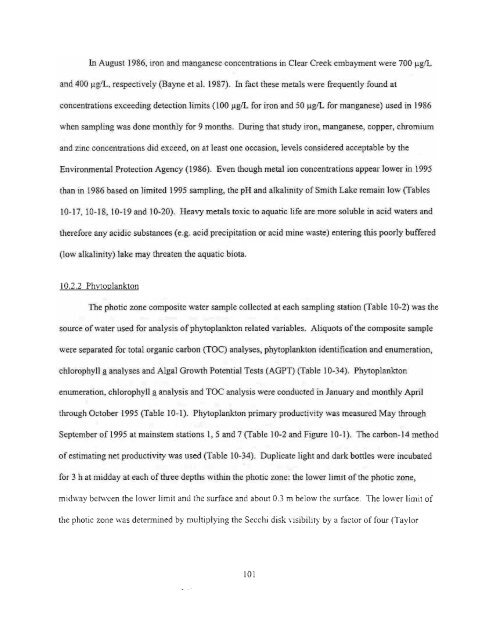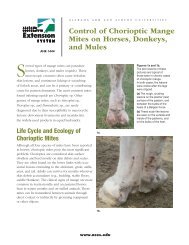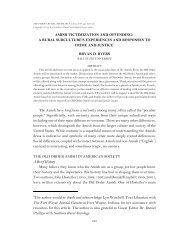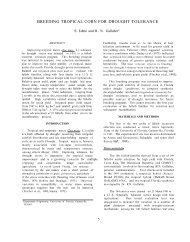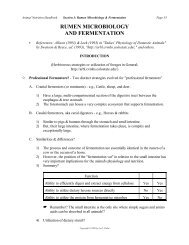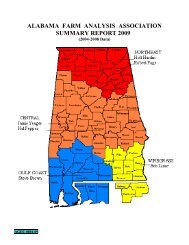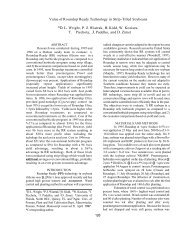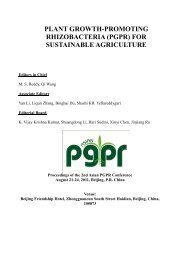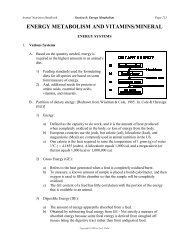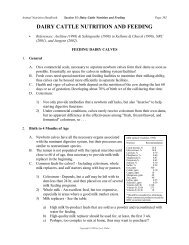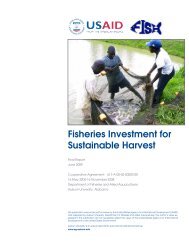LEWIS SMITH LAKE - Auburn University
LEWIS SMITH LAKE - Auburn University
LEWIS SMITH LAKE - Auburn University
Create successful ePaper yourself
Turn your PDF publications into a flip-book with our unique Google optimized e-Paper software.
In August 1986, iron and manganese concentrations in Clear Creek embayment were 700 l!g!L<br />
and 400 l!g!L, respectively (Bayne et al. 1987). In fact these metals were frequently found at<br />
concentrations exceeding detection limits (100 l!g!L for iron and 50 l!g!L for manganese) used in 1986<br />
when sampling was done monthly for 9 months. During that study iron, manganese, copper, chromium<br />
and zinc concentrations did exceed, on at least one occasion, levels considered acceptable by the<br />
Environmental Protection Agency (1986). Even though metal ion concentrations appear lower in 1995<br />
than in 1986 based on limited 1995 sampling, the pH and alkalinity ofSmith Lake remain low (Tables<br />
10-17, 10-18, 10-19 and 10-20). Heavy metals toxic to aquatic life are more soluble in acid waters and<br />
therefore any acidic substances (e.g. acid precipitation or acid mine waste) entering this poorly buffered<br />
(low alkalinity) lake may threaten the aquatic biota.<br />
10.2.2 Phytoplankton<br />
The photic zone composite water sample collected at each sampling station (Table 10-2) was the<br />
source of water used for analysis ofphytoplankton related variables. Aliquots ofthe composite sample<br />
were separated for total organic carbon (TOC) analyses, phytoplankton identification and enumeration,<br />
cWorophyll!! analyses and Algal Growth Potential Tests (AGPT) (Table 10-34). Phytoplankton<br />
enumeration, chlorophyll!! analysis and TOC analysis were conducted in January and monthly April<br />
through October 1995 (Table 10-1). Phytoplankton primary productivity was measured May through<br />
September of 1995 at mainstem stations 1,5 and 7 (Table 10-2 and Figure 10-1). The carbon-14 method<br />
ofestimating net productivity was used (Table 10-34). Duplicate light and dark bottles were incubated<br />
for 3 h at midday at each of three depths within the photic zone: the lower limit of the photic zone,<br />
midway between the lower limit and the surface and about 0.3 m below the surface. The lower limit of<br />
the photic zone was determined by multiplying the Secchi disk visibility by a factor offour (Taylor<br />
101


